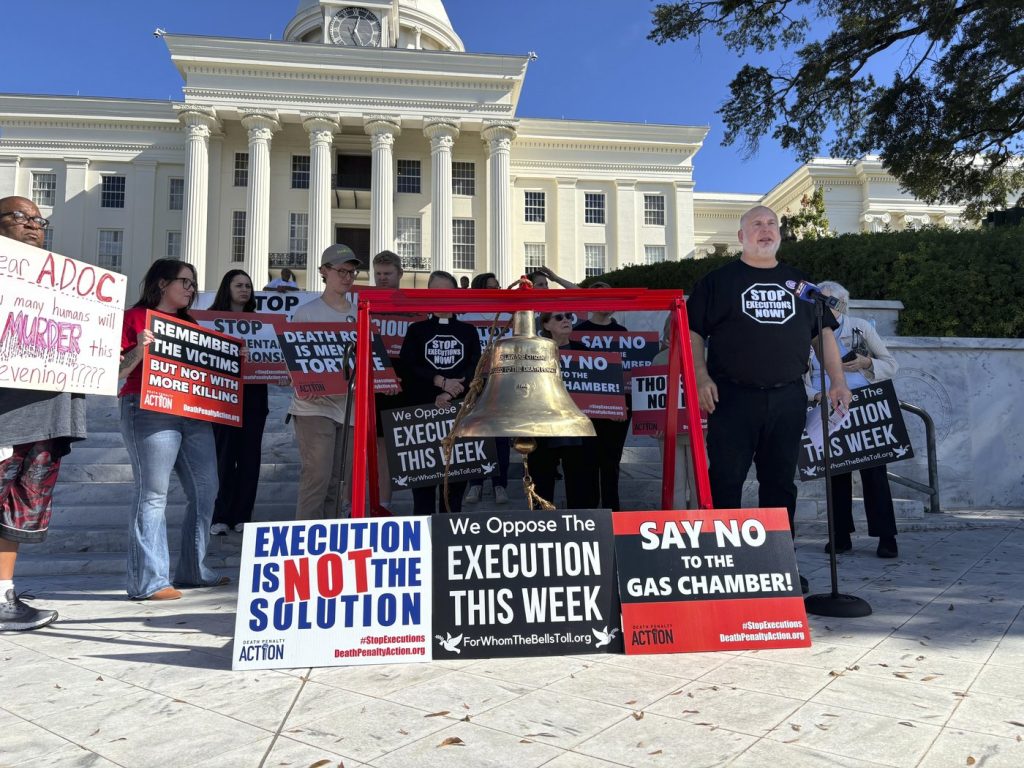Alabama to use nitrogen gas to execute man for 1994 slaying of hitchhiker

An Alabama prisoner convicted of the 1994 murder of a female hitchhiker is slated Thursday to become the third person executed by nitrogen gas.
Carey Dale Grayson, 50, was one of four teenagers convicted of killing Vickie Deblieux, 37, who was hitchhiking through Alabama on her way to her mother’s home in Louisiana. He is scheduled to be executed at 6 p.m. Thursday at the William C. Holman Correctional Facility in south Alabama.
Alabama this year began using nitrogen gas to carry out some death sentences, the first use of a new execution method in the United States since lethal injection was introduced in 1982. The method involves placing a respirator gas mask over the person’s face to replace breathable air with pure nitrogen gas, causing death by lack of oxygen.
Advertisement
Alabama maintains the method is constitutional. But critics — citing how the first two people executed shook for several minutes — say the method needs more scrutiny, particularly if other states follow Alabama’s path and adopt the new execution method.
Deblieux’s mutilated body was found at the bottom of a bluff near Odenville, Alabama, on Feb. 26, 1994. Prosecutors said Deblieux was hitchhiking from Chattanooga, Tennessee, to her mother’s home in West Monroe, Louisiana, when four teens offered her a ride. Prosecutors said the teens took her to a wooded area and attacked and beat her. They threw her off a cliff and later returned to mutilate her body.
A medical examiner testified that Deblieux’s face was so fractured that she was identified by an earlier X-ray of her spine. Her fingers had also been severed. Investigators said the four teens were identified as suspects after one of them showed a friend a severed finger and boasted about the killing.
Grayson is the only one of the four facing a death sentence since the other teens were under 18 at the time of the killing. Grayson was 19. Two of the teens were initially sentenced to death but had those sentences set aside when the U.S. Supreme Court banned the execution of offenders who were younger than 18 at the time of their crimes. Another teen involved in Deblieux’s killing was sentenced to life in prison.
Grayson’s final appeals focused on the call for more scrutiny of the new execution method. They argued that the person experiences “conscious suffocation” and that the first two nitrogen executions did not result in swift unconsciousness and death as the state promised. Attorneys for Grayson asked the U.S. Supreme Court to stay the execution to give time to weigh the constitutionality of the method.
Advertisement
“Given this is the first new execution method used in the United States since lethal injection was first used in 1982, it is appropriate for this Court to reach the issues surrounding this novel method,” Grayson’s attorneys wrote.
Lawyers for the Alabama attorney general’s office asked justices to let the execution go forward, saying a lower court found Grayson’s claims speculative.
The state lawyers wrote that Alabama’s “nitrogen hypoxia protocol has been successfully used twice, and both times it resulted in a death within a matter of minutes.”
Kim Chandler, The Associated Press
Advertisement